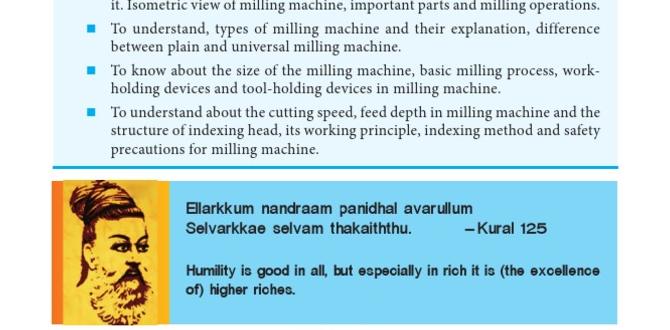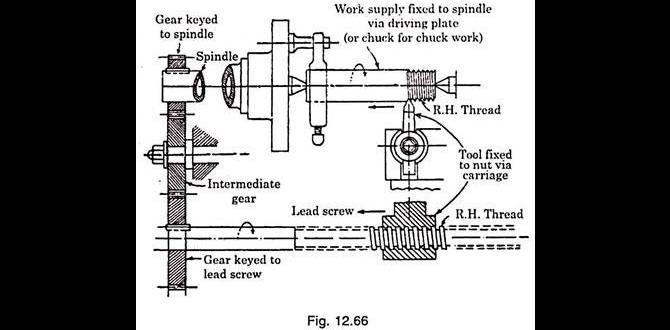For precision machining where tight tolerances are crucial, a carbide end mill, especially a 1/8 inch or 6mm shank model with a reduced neck, is an indispensable tool. Its hardness and rigidity allow for accurate cuts in challenging materials like copper, ensuring exceptional detail and reliability in your projects.
Working with machines can sometimes feel like a puzzle, especially when you need to make parts fit together perfectly. Things like metal lathes and milling machines are fantastic for this, but to get those super-accurate dimensions, you need the right tools. You might have heard of “tight tolerances”—it just means making parts with very little room for error, so they fit snugly and work just right. Getting those tiny, precise cuts can be a bit tricky at first, but don’t worry! With the right knowledge and the right tool, you’ll be making accurate parts in no time. We’ll walk through how a specific type of cutting tool, the carbide end mill, is your secret weapon for these demanding jobs.
What is a Carbide End Mill?
At its core, an end mill is a type of milling cutter. Think of it like a drill bit that can also cut sideways. While a drill bit is designed to plunge straight down into material to create a hole, an end mill is designed to move horizontally, creating slots, pockets, and cutting the edges of a workpiece. It has cutting edges on its sides as well as on its end, allowing it to perform a wide variety of machining operations.
Now, when we talk about “carbide” end mills, we’re referring to the material they’re made from: tungsten carbide. This is a super-hard, super-strong composite material. It’s much harder and more rigid than traditional high-speed steel (HSS) cutters. This hardness is what makes carbide end mills so valuable for demanding tasks, especially when incredible accuracy is needed.
Why “Tight Tolerance” Matters
In the world of machining, a “tolerance” refers to the acceptable variation in a dimension. For example, if a part needs to be exactly 10mm wide, the tolerance might be specified as +/- 0.05mm. This means the actual width of the part can be anywhere between 9.95mm and 10.05mm and still be considered acceptable. “Tight tolerance” simply means this acceptable range is very, very small. We’re talking about needing dimensions like +/- 0.01mm or even finer!
Why would you need such precision? Many applications demand it:
- Interchangeable Parts: When you need multiple identical parts that can be swapped out, like gears in a transmission or components in a scientific instrument.
- Close-Fitting Assemblies: For parts that need to slide or fit together with minimal play, such as bearings, pistons, or precision housings.
- Gauges and Measurement Tools: The accuracy of a measuring tool itself depends on extremely tight tolerances in its construction.
- Aerospace and Medical Devices: These industries often require parts that meet incredibly stringent specifications for performance and safety.
Achieving these tiny dimensions directly impacts the functionality, efficiency, and longevity of the final product. This is where the specialized design of certain carbide end mills becomes essential.
The “1/8 Inch” and “6mm Shank” Advantage
When we talk about a “carbide end mill 1/8 inch 6mm shank,” we’re specifying the diameter of the tool’s shank – the part that holds into the milling machine’s collet or tool holder. Whether it’s a 1/8 inch (which is roughly 3.175mm) or a 6mm shank, these are relatively small diameters. This might seem counterintuitive – why use a small tool for precision?
Here’s the key: smaller diameter end mills are inherently better suited for detail work and achieving tight tolerances. They have less mass and vibration, allowing for finer control during cutting. Their smaller size also enables them to reach into intricate areas and create very small features that larger tools simply cannot.
The 1/8 inch and 6mm sizes are particularly common for hobbyists and those working on smaller, intricate projects or with smaller milling machines. They offer a great balance of capability and accessibility.
The “Reduced Neck” Feature
You’ll often see “reduced neck” specified for end mills intended for tight tolerance work. What does this mean, and why is it important?
Imagine a standard end mill. As it cuts, the flutes (the spiral grooves) extend all the way up to the shank. This means the body of the end mill has a consistent diameter along its cutting length. However, if you need to cut a deep slot or get into a tight corner, the cutting body might rub against the workpiece, causing friction, heat, and inaccurate cuts. This is known as “workpiece interference” or “neck interference.”
A “reduced neck” end mill has a portion of its shank, just behind the cutting flutes, ground down to a smaller diameter. This creates a clearance or relief area. Here’s why this is a game-changer for tight tolerances:
- Prevents Interference: The reduced neck allows the end mill to plunge deeper into a cut or mill very close to a sidewall without the shank rubbing against the material. This is critical for creating clean, precise slots and pockets, especially in materials that are prone to galling or deformation.
- Improved Chip Clearance: The extra space created by the reduced neck can also help with chip evacuation, preventing chips from getting jammed and causing tool breakage or poor surface finish.
- Access to Tight Spots: For intricate designs or parts with small internal features, the reduced neck provides the necessary clearance to access these areas effectively.
This feature is especially beneficial when working with materials like copper, which can be gummy and prone to sticking to cutting tools.
Carbide for Copper: A Perfect Match
Copper is a fantastic material for many applications – it’s an excellent conductor of electricity and heat, and it’s relatively easy to shape. However, when machining copper, especially for tight tolerance work, you can run into some common frustrations:
- Galling/Chipping: Copper can be “gummy.” It tends to stick to the cutting edge of the tool, leading to built-up edges, poor surface finish, and inaccurate dimensions. This is often called “chip welding.”
- Heat Buildup: Machining generates heat. If the tool material isn’t hard enough or doesn’t dissipate heat well, it can soften, leading to faster wear and loss of sharpness.
- Flexibility of Tooling: Softer tool materials can flex more under cutting forces, making it harder to achieve precise geometry.
This is where the inherent properties of carbide shine for copper:
- Extreme Hardness: Carbide maintains its hardness and cutting ability at much higher temperatures than HSS. This means less heat will soften your end mill while cutting copper.
- Rigidity: Carbide is very stiff. This rigidity translates to less tool deflection under cutting pressure, helping you maintain those critical tight tolerances.
- Sharpness Retention: Because carbide is so hard, it holds a sharp edge for much longer periods, which is essential for consistent, accurate cuts, especially in softer, “gummy” materials like copper.
For a “carbide end mill 1/8 inch 6mm shank reduced neck for copper tight tolerance,” you’re essentially specifying a highly specialized tool designed to overcome these challenges. It’s built for precision, detail, and working with materials that can be tricky.
Key Features to Look For
When selecting a carbide end mill for your tight tolerance needs, consider these important features:
Number of Flutes
Flutes are the spiral grooves on the cutting body. The number of flutes affects chip clearance and the finish you can achieve.
- 2 Flutes: Excellent for chip clearance, especially in softer materials like aluminum and plastics. They can also be used for slotting. They are good for tight tolerance work because they allow more room for chips to escape, reducing the risk of workpiece interference.
- 3 or 4 Flutes: Offer a better surface finish than 2-flute end mills and can handle harder materials. However, they have less chip clearance. For very sticky materials like copper or aluminum, more flutes can sometimes lead to chip packing. However, specialized geometries can mitigate this. For tight tolerance work, especially in copper, a 2-flute with good relief might be ideal to start.
Coating
While not all end mills have coatings, some specialized ones do. Coatings can improve surface hardness, reduce friction, and increase tool life. For copper, coatings like TiCN (Titanium Carbonitride) or AlTiN (Aluminum Titanium Nitride) can be beneficial, but often, uncoated carbide with a polished flute is preferred for its lubricity with softer metals.
End Mill Geometry
Beyond the general shape, specific geometry matters:
- Square End: The most common type, creates flat-bottomed slots and pockets.
- Ball Nose: Has a rounded tip, ideal for creating contoured surfaces, 3D as in mold making, or rounded slots.
- Corner Radius: A square end mill with a small radius at the corners. This strengthens the cutting edge and prevents sharp corners from chipping, while still providing a nearly square internal corner. This is excellent for maintaining accuracy and tool life in precise work.
For tight tolerance applications, a well-designed square end or corner radius end mill with a reduced neck is often the go-to choice.
Using Your Carbide End Mill Safely and Effectively
Working with precision tools requires precision in practice. Here’s how to get the best results and stay safe:
Work Holding is King
No matter how good your end mill is, if your workpiece isn’t held securely, you won’t achieve tight tolerances. For milling, this usually means using a vise, clamps, or fixture. Ensure the workpiece is clean, flat, and firmly seated – even a tiny bit of movement can ruin a precise cut.
Collet Chucks for Precision
To hold your end mill, you’ll use a collet system. For high-precision work, a quality collet chuck (like a ER collet chuck) is essential. These grip the end mill shank very accurately and with minimal runout, meaning the tool spins perfectly true.
A 1/8 inch or 6mm shank end mill requires a corresponding size collet. Make sure you have the correct size collet and that it’s clean.
Speeds and Feeds – The Magic Numbers
This is where a lot of beginners get stuck. Speeds and feeds determine how fast the tool spins (speed) and how fast you push it through the material (feed rate). Getting these right is crucial for tool life, surface finish, and accuracy.
Surface Speed (SFM or m/min): This is the speed at which the cutting edge of the end mill is moving across the surface of the workpiece. Carbide generally requires higher surface speeds than HSS.
Spindle Speed (RPM): This is how fast your milling machine’s spindle rotates. RPM is calculated from SFM and the diameter of the end mill:
RPM = (SFM × 12) / πD (where D is the diameter in inches)
RPM = (m/min × 1000) / πD (where D is the diameter in mm)
Feed Rate (IPM or mm/min): This is how fast the tool advances into or through the material. It’s often determined by the chip load – the thickness of the chip each flute is meant to remove.
Chip Load: This is a critical factor for carbide, as it dictates the chip thickness. Too thin a chip, and the carbide edge might rub, generating heat without cutting efficiently. Too thick a chip, and you risk tool breakage or poor machine performance.
For a 1/8 inch (3.175mm) carbide end mill in copper, you’d typically look for:
- Speeds: Around 200-500 SFM (60-150 m/min) is a good starting range for uncoated carbide in copper.
- RPM: This will depend on your machine. For a 1/8″ end mill at 300 SFM: RPM = (300 12) / (3.14159 0.125) ≈ 9167 RPM. Many hobby machines might operate in the 5000-15000 RPM range for small tools. Always use the highest RPM your machine can safely achieve for small end mills.
- Chip Load: This is highly dependent on the specific end mill and machine rigidity. For a 1/8″ end mill, a starting chip load might be around 0.001″ to 0.003″ (0.025mm to 0.076mm) per flute.
Important Note: Always consult the end mill manufacturer’s recommendations or a reliable machining calculator for specific speeds and feeds. These are starting points. You’ll often need to adjust based on your machine’s rigidity, the exact alloy of copper, and the depth of cut.
Depth of Cut (DOC)
For tight tolerance work, especially with small tools, it’s rarely a good idea to take a massive bite. Start with a shallow depth of cut. A common rule of thumb for aggressive milling is a radial depth of cut (how much the tool engages the material sideways) of around 50% of the tool diameter. For axial depth of cut (how deep it cuts lengthwise), start conservatively, maybe 0.5 to 1 times the tool diameter, especially if it’s a full-depth slot.
For very precise work or difficult materials, reducing the DOC even further can improve accuracy and surface finish.
Plunge Rate
When plunging the end mill straight down into the material, use a slower feed rate than your horizontal feed rate. This prevents shock loading and allows the flutes to clear chips effectively as they cut downwards.
Coolant or Lubrication
For machining copper with carbide, a cutting fluid or lubricant is highly recommended. It helps dissipate heat, lubricates the cutting edge, and aids in chip evacuation, preventing buildup and sticking. Flood coolant systems are ideal, but even a spray mist or a specialized cutting paste can make a big difference.
For more information on safe machining practices, the Occupational Safety and Health Administration (OSHA) provides valuable resources on chemical hazard information for cutting fluids, which should always be reviewed before use.
Listen to Your Machine and Tool
Machining should sound smooth and controlled. Grinding, squealing, or chattering noises are signs that something is wrong. This could be:
- Incorrect speeds or feeds
- Workpiece not held securely
- Tool dull or damaged
- Too deep of a cut
- Poor chip evacuation
Stop the machine immediately and investigate. Adjustments are usually simple once you identify the cause. For tight tolerances, smooth, consistent cutting is key.
When to Choose a Carbide End Mill for Tight Tolerances
You’ve invested in a milling machine and are looking to make more accurate parts. Here’s when that specific “carbide end mill 1/8 inch 6mm shank reduced neck for copper tight tolerance” is likely your best choice:
- Small, Intricate Features: When you need to mill very small slots, narrow pockets, or precise details on a part.
- Materials Prone to Galling: Copper, some aluminum alloys, and certain plastics can be challenging. Carbide’s hardness and sharp edge retention are excellent here.
- High-Volume Production or Repeated Use: Carbide tools last much longer than HSS, especially under consistent use, leading to more reliable results over time.
- Dimensional Accuracy is Paramount: When the acceptable deviation from the intended size is very, very small.
- Working with Small Milling Machines: Smaller end mills are often better suited for the spindle speeds and rigidity of smaller machines.
Consider the alternative: High-Speed Steel (HSS) end mills are cheaper but are softer, wear faster, and generate more heat, making them less ideal for sustained tight tolerance work or materials like copper when precision is key.
Achieving Tight Tolerances: A Step-by-Step Example (Conceptual)
Let’s imagine you need to mill a slot in a copper plate for a sensitive electronic component to fit snugly. The slot needs to be 0.250 inches wide and 0.500 inches deep, with a tolerance of +/- 0.001 inches.
Step 1: Select the Right Tool
You choose a 1/8 inch shank, 2-flute, carbide end mill with a square end and a reduced neck. The cutting diameter of the tool itself will be slightly less than 0.250 inches. Let






